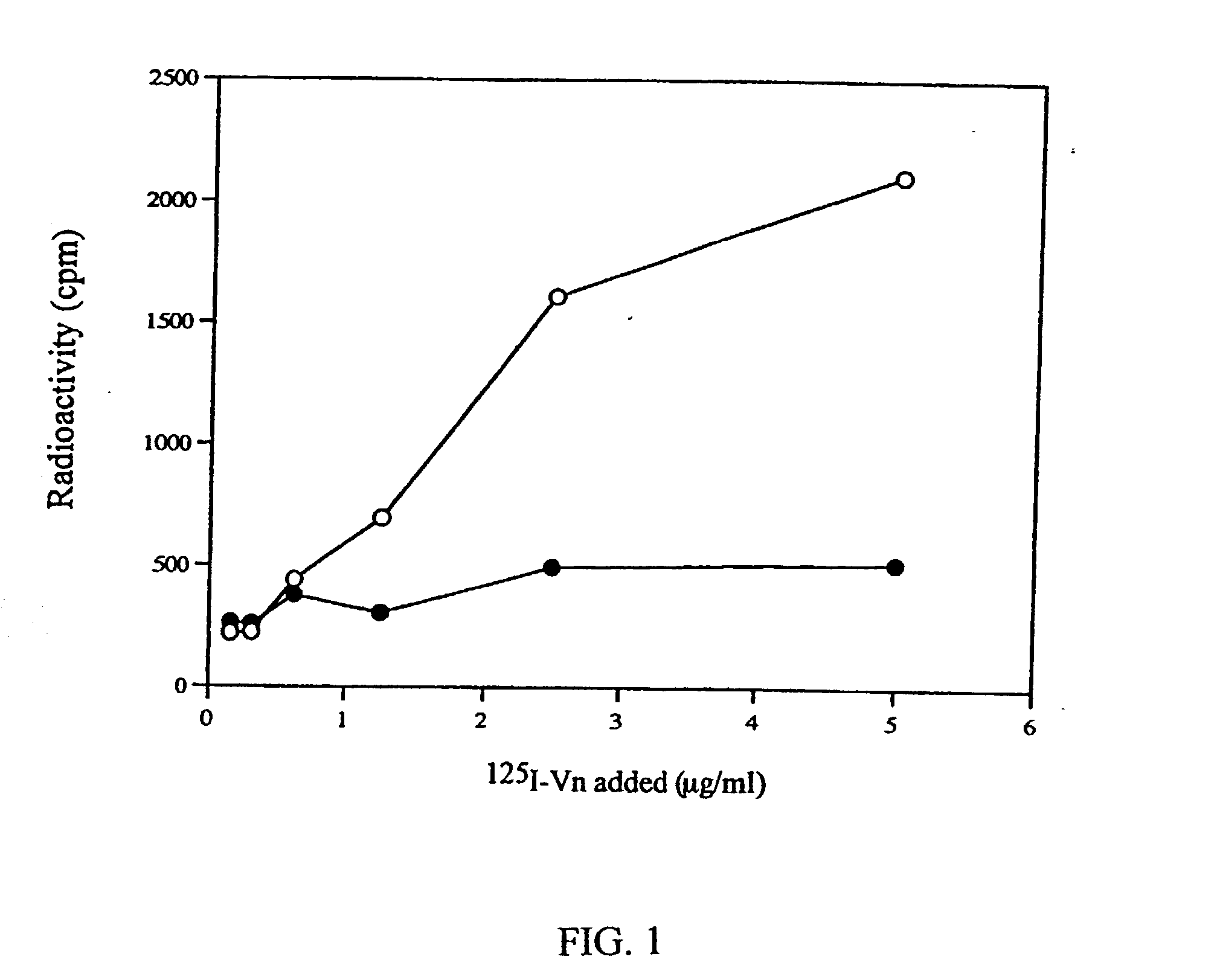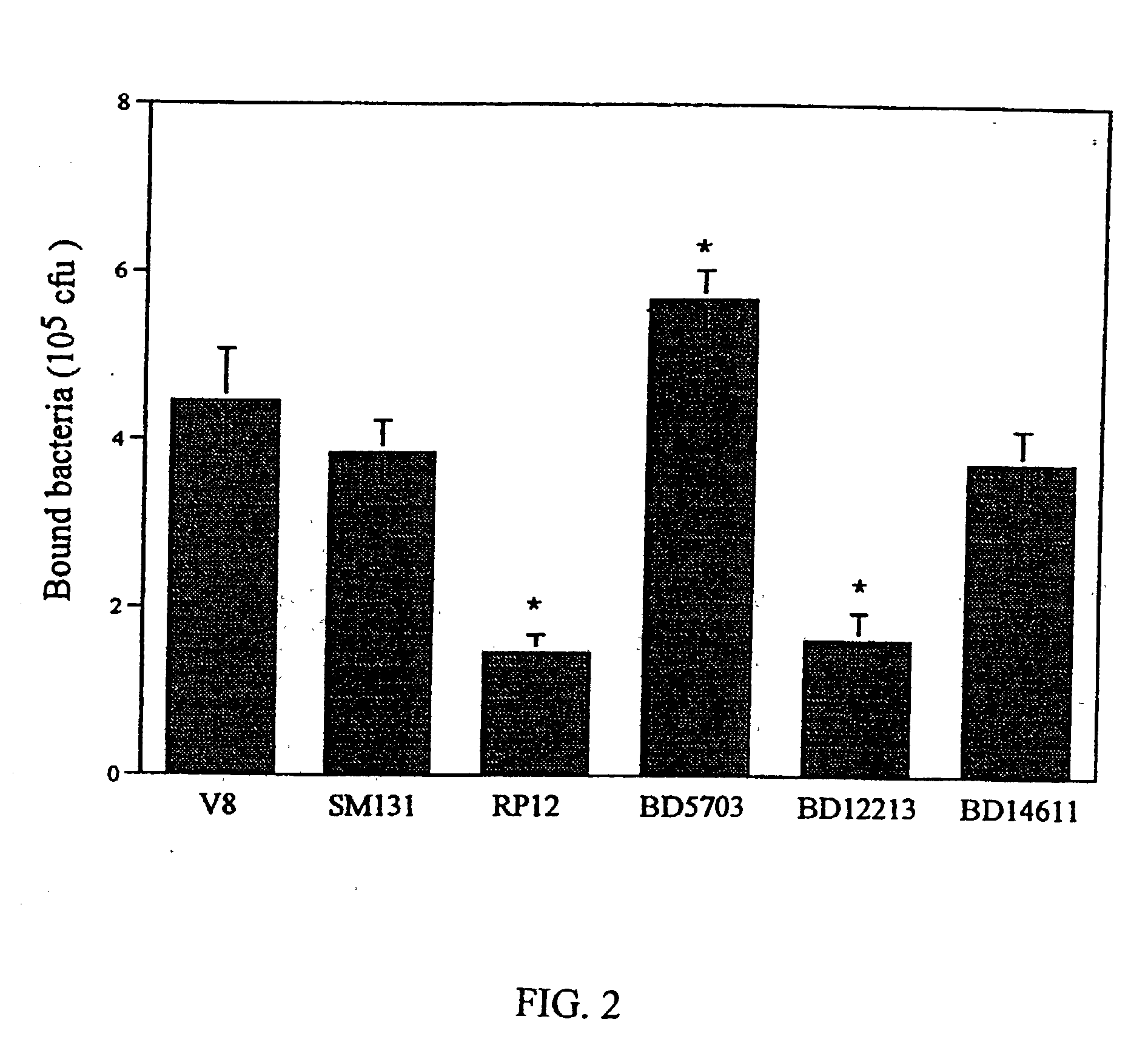52 kda protein from coagulase negative staphylococci and fragments thereof
a staphylococcus and coagulase negative technology, applied in the field of 52 kd protein, can solve problems such as difficulty in separation from small proteins around
- Summary
- Abstract
- Description
- Claims
- Application Information
AI Technical Summary
Benefits of technology
Problems solved by technology
Method used
Image
Examples
Embodiment Construction
[0007] The present invention provides a 52 kD protein that binds to immobilized vitronectin. The protein has been purified from a cell wall extract from the strain S. epidermidis BD5703 isolated from an infected cerebrospinal fluid shunt system, reported to bind vitronectin (3).
[0008] A first aspect of the invention is therefore directed to a protein isolated from Staphylococcus epidermidis having an approximate molecular weight (MW) of 52 kD determined by SDS-PAGE and an N-terminal amino acid sequence of
1 Thr Ala Asp Pro Pro Ala Asp Lys Thr Ser SEQ ID NO:1 1 5 10
[0009] and antigenic determinant-containing fragments of the protein.
[0010] Antigenic determinants contained in the protein of the invention may be identified by any method known in the art, e.g. by sequencing antibody binding sites.
[0011] The antigenic determinant-containing fragments of the protein of the invention will comprise at least 5, preferably at least 10, and most preferably at least 15 amino acid residues to be ...
PUM
| Property | Measurement | Unit |
|---|---|---|
| pH | aaaaa | aaaaa |
| volume | aaaaa | aaaaa |
| pH | aaaaa | aaaaa |
Abstract
Description
Claims
Application Information
 Login to View More
Login to View More - R&D
- Intellectual Property
- Life Sciences
- Materials
- Tech Scout
- Unparalleled Data Quality
- Higher Quality Content
- 60% Fewer Hallucinations
Browse by: Latest US Patents, China's latest patents, Technical Efficacy Thesaurus, Application Domain, Technology Topic, Popular Technical Reports.
© 2025 PatSnap. All rights reserved.Legal|Privacy policy|Modern Slavery Act Transparency Statement|Sitemap|About US| Contact US: help@patsnap.com


